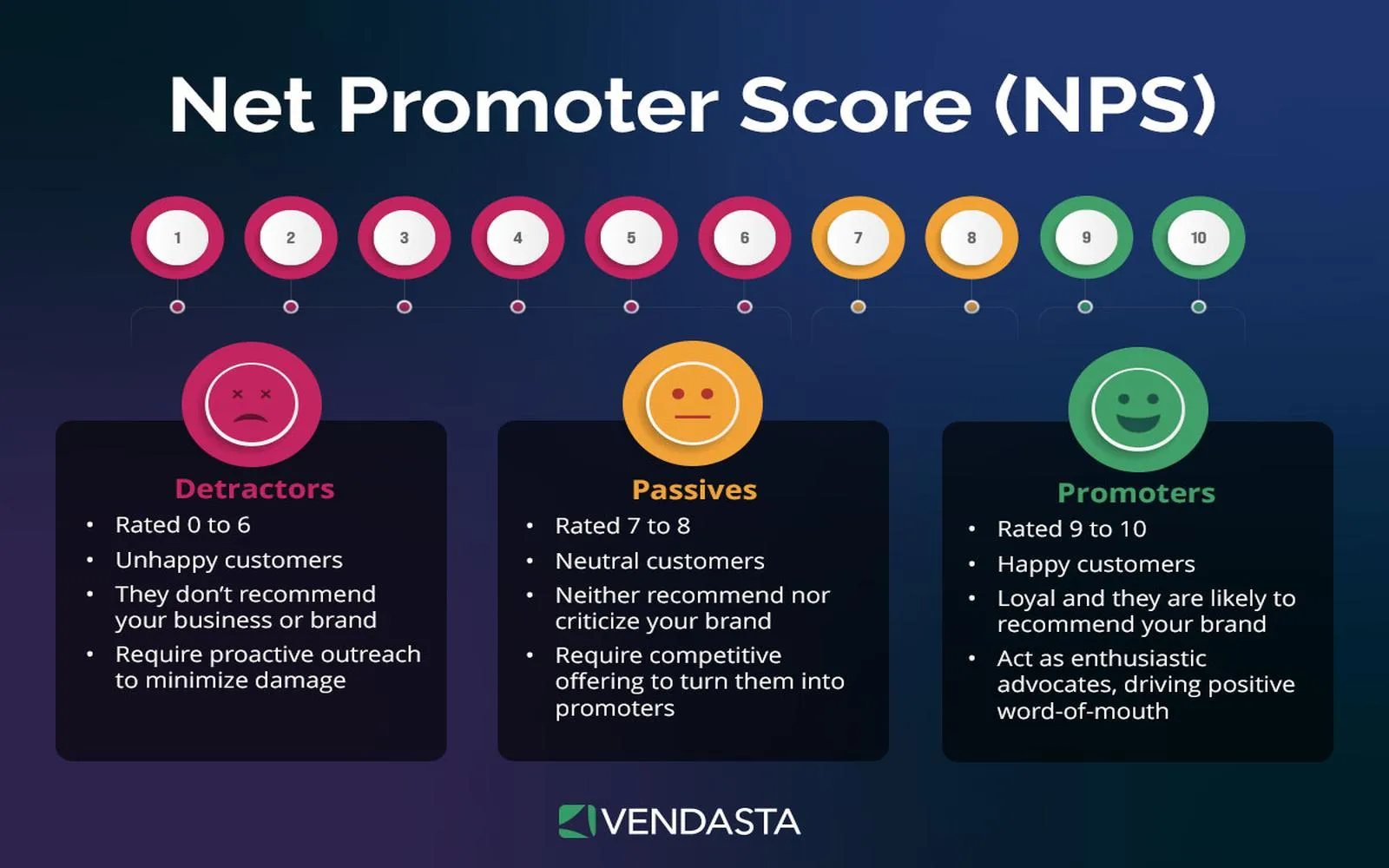Understanding the ''Net Promoter Score (NPS)'' is essential for any organization looking to improve customer satisfaction and loyalty. The NPS Playbook provides a comprehensive guide for companies to implement and utilize NPS effectively across all departments. This metric goes beyond just measuring customer satisfaction; it serves as a critical tool for aligning your entire team towards a common goal of enhancing customer experience.
What is NPS?
The ''Net Promoter Score'' is a straightforward metric that gauges customer loyalty by asking a simple question: “On a scale of 0 to 10, how likely are you to recommend our company/product/service to a friend or colleague?” Based on their responses, customers are categorized into three groups:
- Promoters (9-10): Loyal customers who are likely to promote your brand.
- Passives (7-8): Satisfied but unenthusiastic customers who could easily switch to competitors.
- Detractors (0-6): Unhappy customers who can harm your brand through negative word-of-mouth.
The score is calculated by subtracting the percentage of Detractors from the percentage of Promoters. This simple calculation provides valuable insights into your overall customer experience.
Why NPS Matters to Your Entire Team
Understanding and implementing NPS is not just the responsibility of your customer service team; it is a company-wide initiative that requires input and collaboration from various departments. Here are several reasons why NPS matters to your entire team:
1. Aligns Company Goals
When every department understands the importance of NPS, it aligns everyone towards a common goal: improving customer satisfaction. This alignment can lead to better collaboration and a unified approach to addressing customer concerns.
2. Identifies Areas for Improvement
NPS data can reveal pain points in your customer journey. By analyzing feedback from Detractors, teams can identify specific areas that need improvement, whether it’s product features, customer service responsiveness, or marketing strategies. This information is invaluable for departments like ''Product Development'' and ''Marketing'', enabling them to refine their strategies based on real customer insights.
3. Boosts Employee Engagement
When employees see the direct impact of their work on customer satisfaction, it can significantly boost morale. Sharing NPS scores and customer feedback with the entire team fosters a culture of accountability and encourages employees to strive for excellence in their roles.
4. Enhances Customer-Centric Culture
Integrating NPS into your company culture helps foster a customer-centric mindset. When everyone understands that customer satisfaction is a priority, it influences decision-making processes across the organization. This cultural shift can lead to innovative solutions that enhance the overall customer experience.
5. Drives Business Growth
A high NPS correlates with customer loyalty, which can lead to repeat business and positive referrals. This is particularly relevant for departments like ''Sales'' and ''Marketing''. When your team understands the value of NPS, they can create campaigns that focus on retaining existing customers while attracting new ones through the positive influence of satisfied customers.
Implementing the NPS Playbook
To effectively implement the NPS Playbook, consider the following steps:
1. Set Clear Objectives
Define what you want to achieve with your NPS program. Whether it’s improving customer retention, increasing referrals, or enhancing product offerings, having clear objectives will guide your team’s efforts.
2. Collect and Analyze Data
Utilize various channels to gather NPS feedback from your customers. This can be through surveys, social media, or direct outreach. Analyzing this data will help you understand customer sentiment and identify trends that need addressing.
3. Share Insights with Your Team
Regularly share NPS scores and customer feedback with all departments. Create visual representations, such as tables or charts, to illustrate the data clearly. For instance:
| Customer Segment | Percentage |
|---|---|
| Promoters | 60% |
| Passives | 25% |
| Detractors | 15% |
4. Act on Feedback
Use the insights gained from NPS feedback to make informed decisions. Whether it’s enhancing product features or improving customer service training, taking action is critical to driving change.
5. Continuously Monitor and Adjust
NPS is not a one-time measure; it requires continuous monitoring and adjustment. Regularly solicit feedback and adapt your strategies based on changing customer needs and market conditions.
Conclusion
In conclusion, the ''NPS Playbook'' is a vital resource for organizations aiming to improve customer loyalty and satisfaction. By understanding the significance of NPS and implementing it across all teams, businesses can create a more customer-centric culture that drives growth and success. Embrace NPS as a company-wide initiative, and watch how it transforms your organization’s approach to customer experience.





